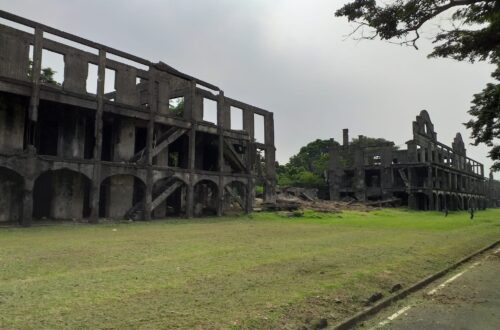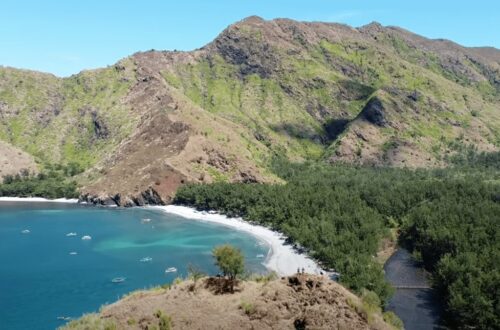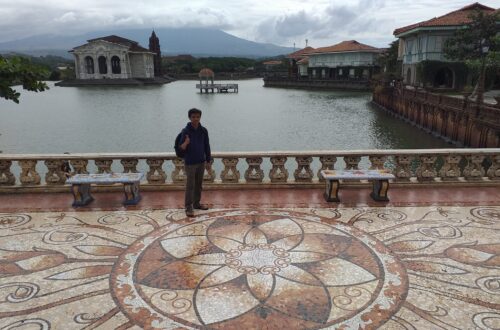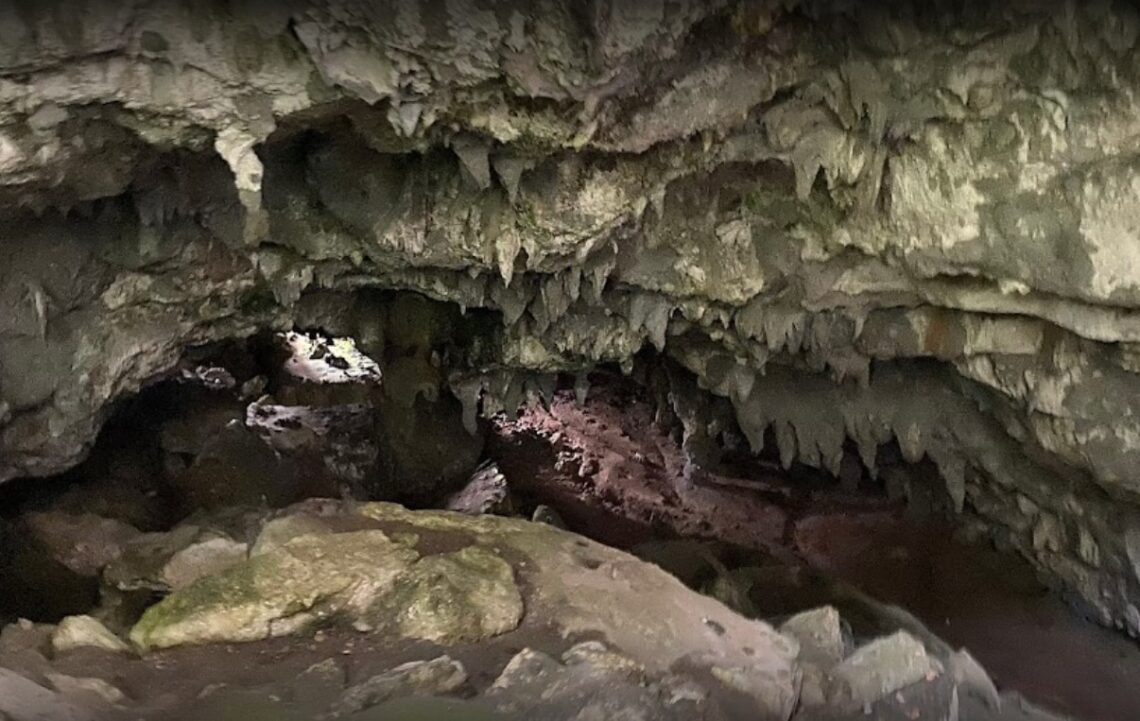
Sumaguing Cave
Introduction
Sumaguing Cave also known as the Big Cave is one of the well known tourist attractions in Sagada, Mountain Province. It provides courageous tourists a remarkable view of spectacular rock formations, and diverse chambers as well as electrifying cave exploration. Sumaguing Cave is the deepest cave in the Philippines with a depth of more than five hundred feet and it is featured in a lot of travel documentaries. Inside the Sumaguing Cave, visitors can see amazing columns, stalagmites, stalactites, underground pools and numerous unique rock formations that are appealing to the human eye. A trip to Sagada won’t be complete without trying spelunking in Sumaguing Cave.

Name: Sumaguing Cave
Location: Sagada, Mountain Province, Philippines
My trip to Sumaguing Cave
It’s another day of exploring in Sagada and we only bring headlamps, water, a waterproof bag and our cellphone. Our group headed to the Sumaguing Cave which is the deepest cave in Sagada that has a depth of more than 150 meters. We started descending along the 45 degree man-made staircase which is very near the roadside and after that we reach the mouth of one of the widest caves in the Philippines. I looked around and noticed that the entrance of the cave is occupied with plants as well as arbitrary speleothems on the ground and stalactites in the ceiling like a gothic vault. Then I looked down and it became clear to me how challenging an experience it will be especially for the first timer who will be doing spelunking.

Then our tour guide named Arthur have a short orientation and tell the group members to stop, look and listen while exploring. Also, he informed us that in Sagada there are more than sixty caves that can be found but the most famous cave is the Sumaguing Cave. It is believed to be haunted by spirits of their forebear. A few minutes later, we really submerge in the cave and can’t see anything because it’s pitch black but our tour guide have traditional lamp and making sure everything is safe. Then I heard a lot of bats swarming in the ceiling of the cave and we need to be very careful because the limestone is very slippery and the terrain is very challenging. In this part, all visitors are instructed to focus on the pathway and avoid taking pictures.

Our group traverse the steep, slippery, sharp stones covered with bat urine and poop. In some parts, my foot slipped a little but I managed to maintain my balance. Afterward, we can really smell the strong smell of guano bat poop which is a great fertilizer. As we descend through the deeper parts, we’ve noticed that our breaths started to mist and the path filled with flow rocks which is very rough and not so slippery.
Then we saw a rock formation that looks like a bear and a pig pen and afterward, we saw a rock formation resembling crocodile teeth as well as rock formation resembling rice terraces. The most remarkable rock formation we saw in Sumaguing Cave is the King’s curtain. Our tour guide explained to us that these intricate rock formations inside the maze like cave are formed due to weathering and millions of years of geologic events which is proof of the utter splendor of mother nature. Before we enter the second part, a twin elephant head rock formation welcomes us.
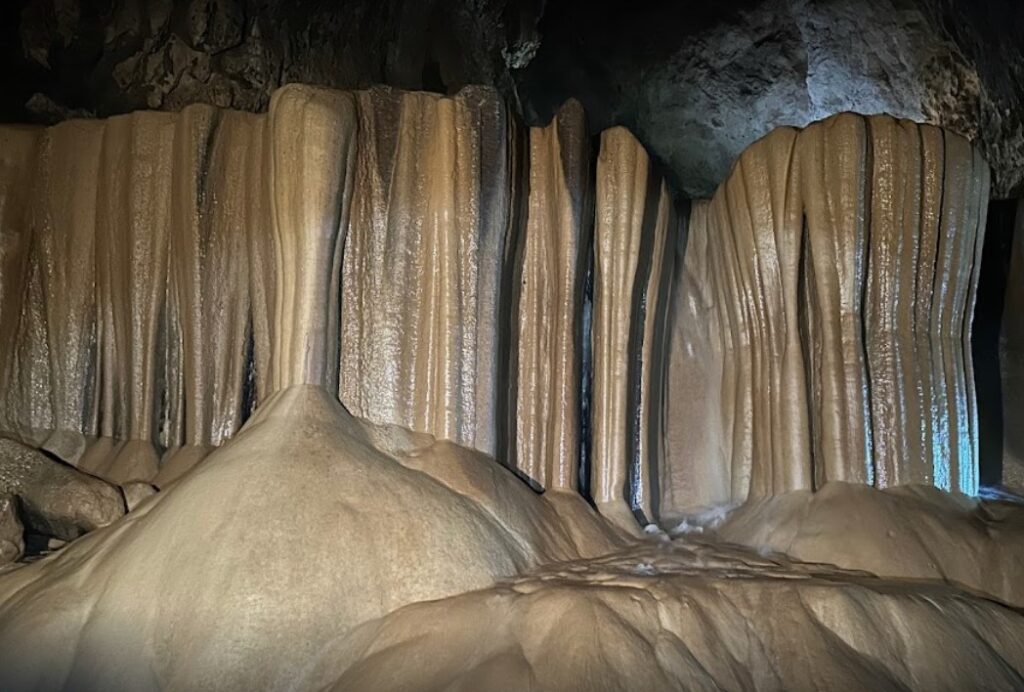
Then I noticed that the limestone rocks here look so smooth and awesome but the surface in my opinion is like sandpaper. A few moments later, I was so dumbstruck because we saw a radiant rock formation resembling a sparkling star as well as chocolate cake rock formation. Then we had to climb this whole straight vertical thing and it’s really not easy and I’m worried about it. I feel so intense and one mistake can cause a serious injury. Nevertheless, with the help of the spider technique we breakthrough. Then we need to squeeze our body into narrow opening and immerse in ice-cold water and get wet.

Later, during the short rappelling, at this point everyone must take off their sandals because its a lot easier to maneuver around barefoot and really just grip everything. Our tour guide showed us what to do and for some group members this is the most enjoyable part. We hold the rope and our guide even told us that walking barefoot provides better grip and better traction than any footwear. Then we walk into what’s called the dinosaur footprint and I found out that the water here is really cold and refreshing. As we continue to explore the place, more beautiful rock formations are revealed and it’s truly a sight to behold.
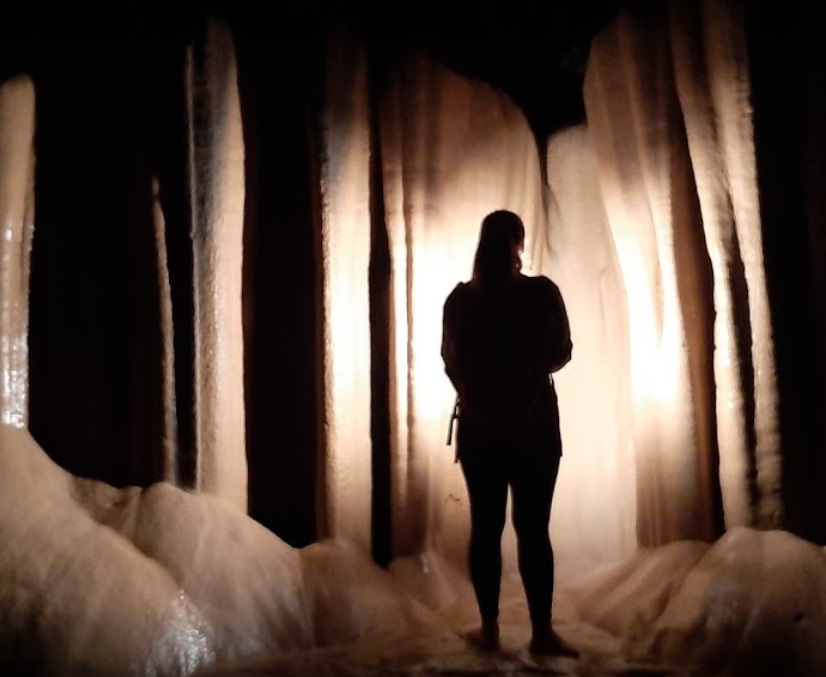
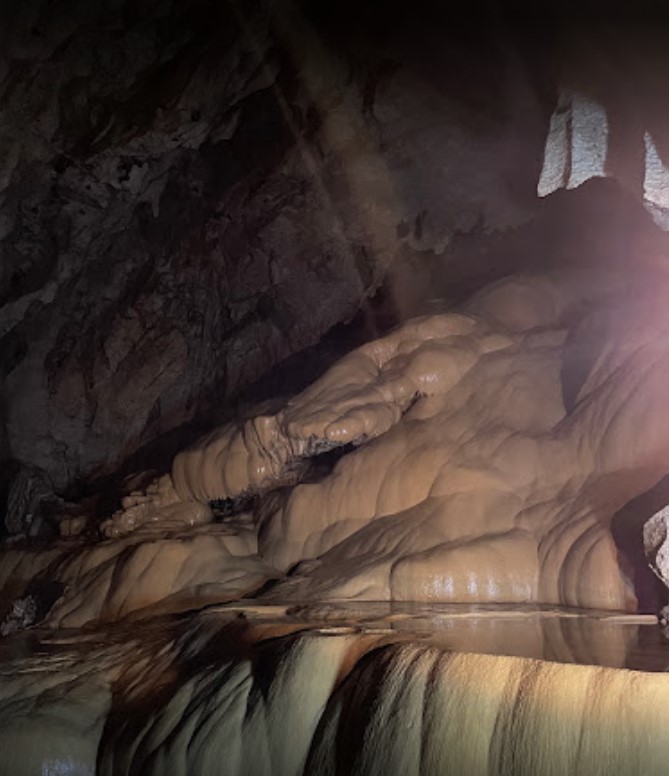
We are in the dark for almost two hours exploring the Sumaguing Cave. The way out of this cave is the same as the entry point. For this reason, we climbed back up towards the mouth of the cave. Overall the spelunking is ain’t easy but we made it, we survived, have fun and story to tell to every adrenaline junkie. Without a doubt, my top caving experience until today is the Sumaguing Cave because it test my physical fitness through the cave’s passages and squeezing through narrow gaps. To be honest, it’s not for the fainted hearts and it’s one of the unique trips I’ve ever been to. After our caving experience, we thanked Arthur and our group decided to eat at Misty Lodge and Cafe where it feels like home. I ate bacon mushroom burger and rib eye steak to filled my appetite.
Things to bring on your visit to Sumaguing Cave:
Headlamp
Bottled water
Hiking sandals or slippers
Extra underwear, shirt, and short
Rash guard (optional)
Toiletries
Dry bag
Zip lock bag
Waterproof camera and smartphone
Plenty of cash
How to Go to Sumaguing Cave
- From Baguio City, ride a taxi going to GL Trans terminal and afterward ride a bus bound to Sagada, Mountain Province. The estimated travel time is about five hours.
- Then proceed to the Sagada Municipal Tourist Information Center to pay the registration fee and local guide fee. After that, the local guide will take you to the Sumaguing Cave.
Reminders and Tips:
- The entrance fee in Sumaguing Cave is 100 pesos per head which will be paid at the tourism office and the tour guide fee for a short course caving of two hours is 800 pesos for five visitors or less. Meanwhile, the tour guide fee for six visitors or more ranges from 900 pesos up to 2400 pesos (3 guides). Note: all rates may change without notice.
- Always follow your tour guide for your safety and never stray from your group. Do not venture the cave on your own and always ask the supervision of a local expert.
- Exploring the Sumaguing Cave will last for 1 hour and 30 minutes up to two hours depending on the group pacing. Note: this activity is not advisable for people with fear of height, have asthma, heart ailment, and other injuries.
- Respect the locals in Sagada and avoid taking pictures of the locals without permission. Also, no smoking, no vandalism and littering inside the cave.
- The best month to visit Sumaguing Cave is during the summer season which starts from March up to May.
- Wear only light clothes because inside the cave you will get wet and dirty as the water sometimes is chest deep. Also keep your precious items in a waterproof bag or zip lock plastic bag.
- Just near the entrance to the Sumaguing Cave, there is a shower room at the small store where you can take a shower for a minimal amount.
- Wear a sturdy pair of sandals with a good grip because some parts of the cave are very slippery.
- The locals consider the cave as a sacred ground so keep your noise to minimal.
- If you want a more challenging and thrilling spelunking experience you may try the Sumaguing Cave and exit at Lumiang Cave. This cave connection may take 4 to 5 hours to complete and this activity requires adventurous people to use every limb on their bodies as they try to rappel, climb, crawl and wade through the pools of water.
- Do not enter the cave under the influence of alcohol or other substances.
- Collection or removal of wildlife, plants, minerals or other items found on the property or in the caves including scientific specimens is not allowed.
- For regular days, the cave is opened for touring at 7 am in the morning and the last trip ends at 4 pm. Note: the time policy for caving is strictly adhered.
- Above all, don’t put your trash inside the cave. Practice the leave no trace principle.
There you have it, spelunker. In the end, it’s not about the destination but the journey itself, the exploration, the growth, and the stories created along the way.


